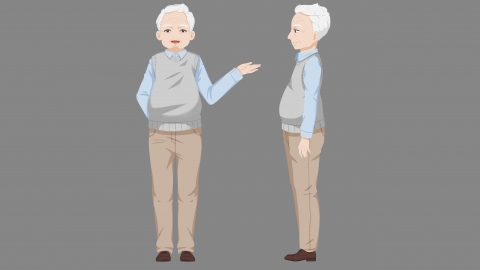What are the causes of white hair?
Gray hair may be caused by aging, prolonged excessive stress, nutritional deficiencies, albinism, or vitiligo, and can be managed according to specific circumstances. If discomfort occurs, it is recommended to visit a hospital promptly for diagnosis and follow medical advice for treatment to avoid delaying the condition.

1. Aging: With increasing age, melanocyte function declines, reducing the capacity to produce melanin. As melanin content in hair decreases, hair gradually turns gray. This is a natural physiological process, typically starting from the temples and gradually spreading to the entire scalp. Hair dyeing can improve appearance, and consuming more black-colored foods such as black sesame seeds and black beans in daily diet may provide some supportive benefits for hair health.
2. Prolonged excessive stress: Long-term high-pressure states and mental tension can lead to excessive secretion of hormones such as adrenaline, which interferes with melanocyte function in hair follicles, causing premature graying. This may often accompany symptoms like anxiety and insomnia. Learning emotional regulation through activities like exercise, meditation, or traveling, and ensuring sufficient sleep can help the body return to a normal condition.
3. Nutritional deficiency: Long-term dietary imbalance and lack of nutrients such as B vitamins, copper, and zinc may affect melanin synthesis, resulting in gray hair. This may also be accompanied by symptoms like dry skin and mouth ulcers. Adjusting diet by consuming more foods rich in these nutrients, such as brown rice, nuts, lean meat, and animal liver, is recommended. Nutritional supplements may also be taken under a doctor's guidance if necessary.
4. Albinism: This condition is typically caused by genetic factors, characterized by a lack of key enzymes required for melanin synthesis. From birth, melanin synthesis in hair and skin is impaired, resulting in white or light yellow hair. Patients generally have light-colored skin and hair and are sensitive to light. Currently, there are no specific therapeutic drugs. Physical sun protection measures, such as wearing hats and sunglasses, are recommended to prevent UV damage. Hair dyes can also be used to improve appearance.
5. Vitiligo: Autoimmune factors and others can damage melanocytes, leading to localized loss of melanin in the skin and hair, resulting in gray hair, often accompanied by white patches on the skin. These patches have clear boundaries and vary in size and shape. Under medical guidance, patients can use medications such as mometasone furoate cream, tacrolimus ointment, and psoralen injection to promote melanocyte recovery and improve gray hair symptoms.
It is recommended to develop good lifestyle habits, avoid excessive fatigue, and refrain from strenuous exercise to prevent physical discomfort. Appropriate activities such as walking or jogging according to individual conditions are advised to enhance immunity and aid in physical recovery.





